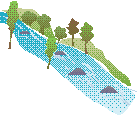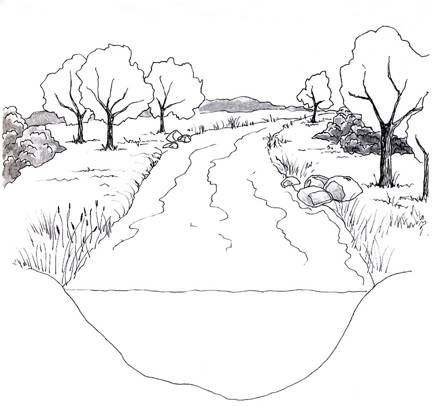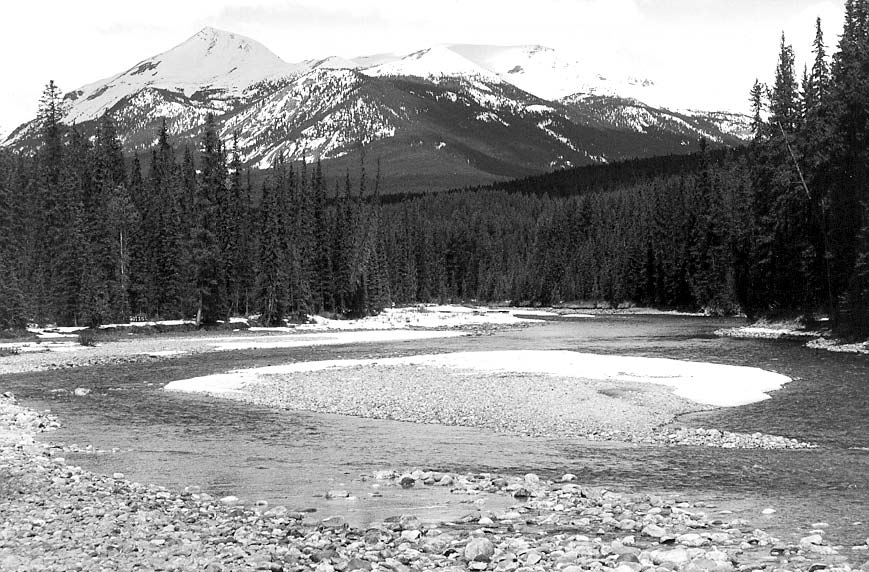River and Stream Aquatic Zones |
 Key Characteristics of Rivers and Streams
|
The Flowing of Rivers and Streams How fast is your water? The water in rivers and streams is in constant motion. It moves faster with a steep gradient, a narrow, curving or a high volume of water. Though the average speed of moving water is about 5-6 kilometers (3-4 miles) an hour (a fast walk for humans), the speed can range up to 31 km (19 miles) an hour during floods. Water moves fastest in the middle of the channel and around the outside of a curve, where it carves under the banks. The slower waters on the inside of a curve cause rocks and other carried materials to fall out. Much of the land around us has been shaped by flowing water. Over time, rivers smooth out their beds. As rivers cut through softer rock faster than through harder rock, waterfalls and rapids are associated with young rivers. Over time canyons may be lifted up while the rivers continue to cut down the bedrock. Streams and rivers often begin high in mountains, where their source (or headwaters) is melting snow. Their mouths form deltas and alluvial fans as they approach lakes, seas, or oceans. Near the head, the water flow is shallow and carries a lot of material. Later, as the stream or river drops its load, it will begin to meander (wander) (See picture above), cutting banks and making sand bars. If the river floods, it cuts across the meanders, creating oxbows and oxbow lakes. |
Carrying by Rivers and Streams
Water is a heavy carrier of materials, especially in the constantly moving waters of rivers and streams. Stationary or slow water drops its contents, but faster water gathers new materials and can carry them quite a distance. |
DeltasDeltas are fan-shaped deposits that form at the mouth of a river. As the moving water enters a still or slow-moving body (such as the ocean), it drops its load of particles and materials. As these fill up the river channel, the water moves around and forms new paths of flow. These secondary channels also slowly fill up with deposited materials, and the water fans out again, forming a delta. Deltas are continually changing their shape and depth as more materials are carried downstream and deposited at the river mouth. |
Environmental Challenges:Toxins |
Dams and DistressWe straighten, channel and dam rivers in an attempt to control flooding and make water more accessible for drinking and irrigation. Unfortunately, this often creates new problems. The more we channel, the more floods will occur. |
Return to Describing Your Water Return to Water Index |
